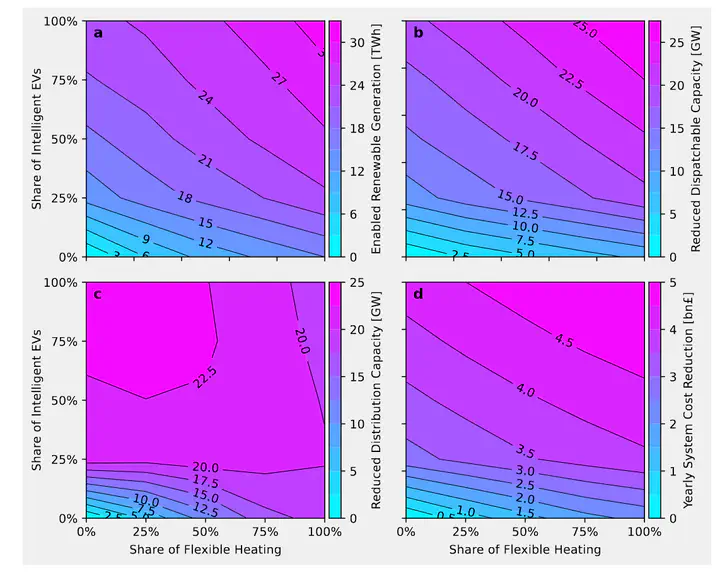Power System Benefits of Simultaneous Domestic Transport and Heating Flexibility in Great Britain's Energy Transition

Abstract
The electrification of heating and transport in Great Britain will allow households to provide more flexibility to the grid. Previous studies show how domestic demand flexibility enables more renewable generation to be usable and reduces the required capacity expansion of both network and dispatchable generation. However, it remains less clear how flexibility in transport and heat interact and how the achieved benefits are spatially distributed. This research addresses these questions using a novel linear optimisation model PyPSA-FES, designed to simulate optimistic and pessimistic transition pathways in National Grid ESO Future Energy Scenarios. PyPSA-FES models the future power system in Great Britain at high spatiotemporal resolution and integrates demand flexibility from both smart charging electric vehicles and thermal storage-coupled heat pumps. The model then optimises the trade-off between reinforcing the grid to align charging and heating profiles with renewable generation versus expanding dispatchable generation capacity. The results show that from 2030, under optimistic transition assumptions, domestic demand flexibility can enable an additional 20-30 TWh of renewable generation annually and reduce dispatchable generation and distribution network capacity by ∼20 GW each, resulting in a total cost reduction of around £5bn yearly. However, further experiments suggest that half of the total system cost reduction is already achieved by only 25% of electric vehicles alone, while the benefits of flexible heating are almost linear with rollout. Further, the cross-sectoral analysis shows that each sector’s flexibility substantially affects the benefits achieved in the other. The findings indicate that once smart electric vehicle charging reaches a 25% penetration rate in households, minimal benefits are observed for implementing smart 12-hour thermal storages for heating flexibility at the national level. Additionally, smart heating benefits decrease by 90% across all metrics when only pre-heating (without thermal storages) is considered. Spatially, demand flexibility is often considered to alleviate the need for north-south transmission grid expansion. While neither confirmed nor opposed here, the results highlight a more nuanced dynamic where generation capacities are moved closer to demand centres, enhancing connectivity within UK sub-regions through ∼1000 GWkm of additional transmission grid capacity.